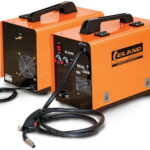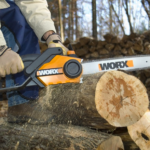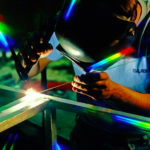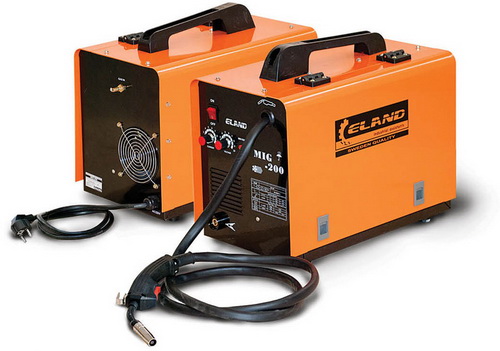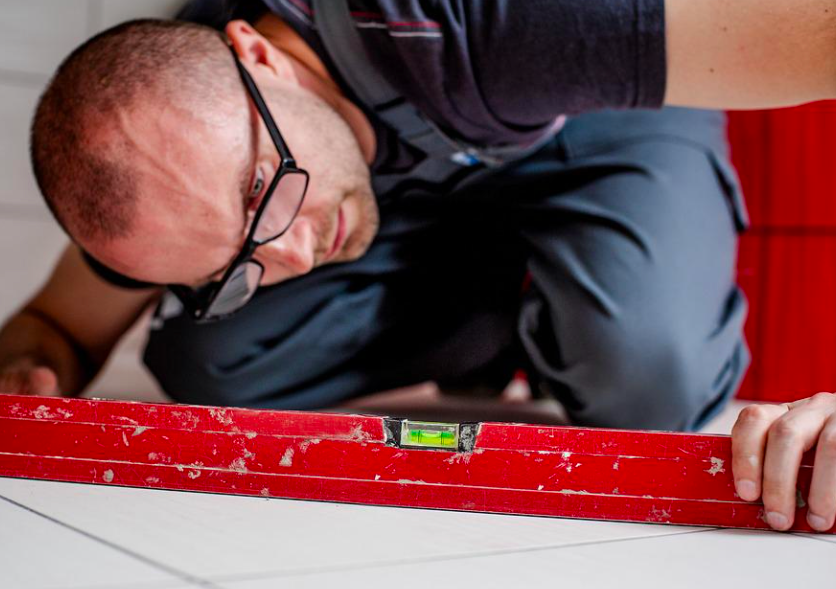How to use a welding machine: connecting, setting and welding
The welding machine is popular among residents of private houses and specialized workers. The first one always needs to cook something, but there is no knowledge. This article is for them, because you don’t want to call the experts every time for a considerable amount. Therefore, below we will look at how to use a welding inverter correctly, what a welding inverter is, how it works, how a seam is formed during welding, and how to weld metal using inverter welding.
Why an inverter? This is the best welding for private traders. Inverters are high-power, lightweight/take up little space, efficient, produce direct current, easy to transport, and inexpensive. A good inverter will cost you 7-10 thousand rubles.
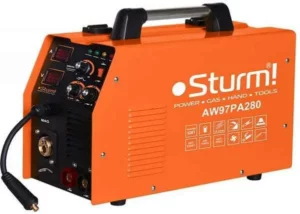
The content of the article
Inverter - what is it? How does an inverter welding machine work?
An inverter is a type of welding machine used in everyday life and industry by professionals. Its task is to connect/weld metal surfaces/workpieces. This happens by heating them with high current intensity.
The inverter consists of a transformer, rectifier, connecting cables, adjustment elements, housing, and operating handle.
The alternating voltage from the network enters the inverter, and from there it enters the transformer. There the electrical voltage decreases.Using the control panel you can adjust the variable voltage. Next, the current enters the rectifier, where it passes through the transistors and becomes constant. Direct current is supplied through cables to the working handle. An electrode is inserted into the handle. The mass is connected to the cleaned metal surface. This creates a circuit - from the ground through the inverter to the electrode of the working part. When the circuit closes, an electric arc with high current is formed. This arc heats up the air and metal next to it. This causes the workpiece and electrode to melt. The fused metals mix and cool to form a seam—the surfaces of the metals are joined.
Inverter welding operates from a mains voltage of 220 Volts. There is specialized equipment that operates on 380 Volts.
In addition to the main advantages of inverters (size, dimensions, power), it can be noted that inverters do not reduce the voltage in the network. During operation of some welding machines, the voltage in the network may decrease - sufficient voltage will not reach the electrical appliances. This may cause them to malfunction/not work. Also, inverter welding can operate at low voltage - household models also turn on at 180 Volts, professional ones - depending on the model. This is a plus for rural residents. Reduced network voltage in villages does not surprise anyone; for some this is the norm.
Welders say inverters are popular because of their advantages, one of which is the arc. It is softer and easier to control, so welders learn to work first with inverters.
What does an inverter consist of? What does an inverter welding machine look like?
Welding is a small box made of thin sheet metal.It has ventilation holes, a control panel with indicators for overheating protection, networks, regulators, two connectors for working welding cables, one connector for welding power.
Internally, the inverter consists of a rectifier, a DC bus, the inverter itself and connecting cables.
This design weighs up to 7 kilograms (household models). Professionals weigh more. To make it convenient to carry/use the tool, it always has a handle/strap for carrying.
When choosing an inverter, consider the length and flexibility of the cables - the longer and more flexible they are, the more convenient it is to use the device. But not high-power inverters are equipped with flexible cables.
How to cook with an inverter. Tips for novice welders. How welding occurs. What does an electrode consist of?
The general concept of all types of welding is that they create a circuit that is completed by the metal being processed and the electrode/wire. The circuit is made from network electricity, its voltage decreases, the current increases. When the circuit is completed, an arc is formed. It melts the metal rod in the electrode and the metal of the part.
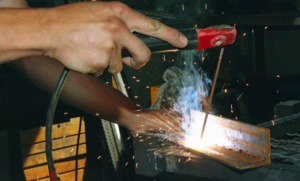
There are two welding methods:
- connect the ground to positive and the electrode to negative;
- ground to minus, electrode to plus.
They are called, respectively, direct and reverse. What is the reason for this division? The thickness of the metal being welded. The reverse method is used for welding thin sheets, the direct method is used for metals from 3 millimeters. Why? An object connected to the positive output heats up more. If you connect thin sheet metal to the positive, it will overheat, melt, fuse, so an electrode is connected to the positive output. Thick metal tolerates high temperatures, so a mass from the positive output is connected to it.
The electrode consists of a coating and a metal rod.During welding, the surface of the part, the electrode rod and the coating melt. The coating turns into liquid form, partially into gaseous form and evaporates. The liquid coating covers the molten metal, creating a protective environment and a weld pool. A bath is a mixture of molten metals that cool and form a seam. The protective environment prevents the metal from coming into contact with air, so it will not oxidize. As the seam cools, the protective medium/molten coating also cools. This is the slag that remains after welding.
Before using the welding inverter, inspect it and check the voltage in the network. Connect the device to the mains. Let it warm up. Choose your welding method depending on the thickness of your metal. Connect the appropriate cables to the outputs. Insert the electrode into the handle. Clean the areas on the metal to be welded for mass and welding. Connect ground. Hard-to-reach places are cooked at right angles. By tilting the handle with the electrode 30-60 degrees towards you and moving it forward (away from you), you can cook horizontal and vertical surfaces. Also tilting the handle with the electrode, but moving it towards you (backwards), make connections in the corners/at the joints.
During welding, you need to draw shapes with an electrode in order to expand the seam and make it more reliable. The main figures drawn by the electrode are circles, triangles, lightning bolts, and zigzags.
Depending on the duty cycle of your welding, take breaks to allow the inverter to cool down. PV – duration of switching on. This is an indicator of how long the weld can work. That is, if the PV is 50%, then in a conventional 10 minutes the device can operate/cook for 5 minutes. It will cool for the remaining 5 minutes.There are models of inverter welding that can operate continuously - the on-time is 100%.

